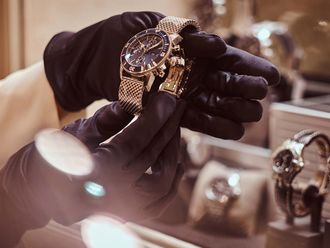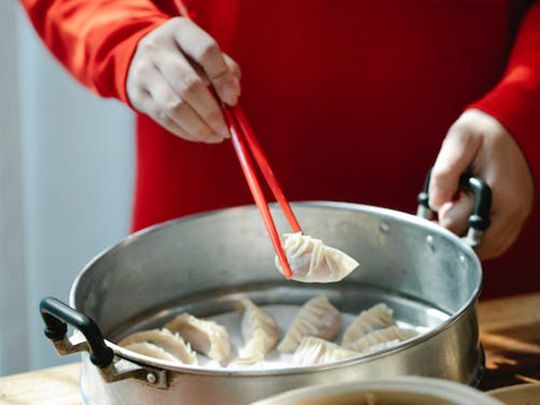
Dubai: I often get asked about how to use them right. The truth is that chopsticks - these two equal-length ‘extended fingers’ carry different characteristics and traditions in countries such as China, Japan, South Korea and Vietnam. Here’s a quick guide ….
Inventors of chopsticks weren’t born using them
You may be impressed by how Chinese people can pick up a single grain of cereal using just two sticks, but they didn’t start off by using chopsticks for food. Instead, they used forks and knives.
China is among the earliest civilisations that used forks and knives for their meals. According to a documentary made by China Central Television (CCTV), bone forks and knives were discovered at the Zongri Site, in Qinghai province. They were used primarily during the period of Majiayao culture from 3,300 BC to 2,000 BC.
Although unclear when chopsticks originated in China, they made their appearance at multiple archaeological sites in the country dating back by 3,000 years, proving their presence as table utensils for three millennia.
As legend goes, the heroic king in ancient China, Yu the Great, who was famous for his state efforts at flood control, was cooking some meat pieces in a pot over fire when out at a flood site. When they were cooked, he was so hungry that he couldn’t wait for them to cool down before grabbing them to eat. However, there was no spoons available, so he used two long twigs to pick up the steaming hot pieces to satiate his hunger. His subordinates followed suit one after another, and thus was born the prototype for the modern-day chopsticks.
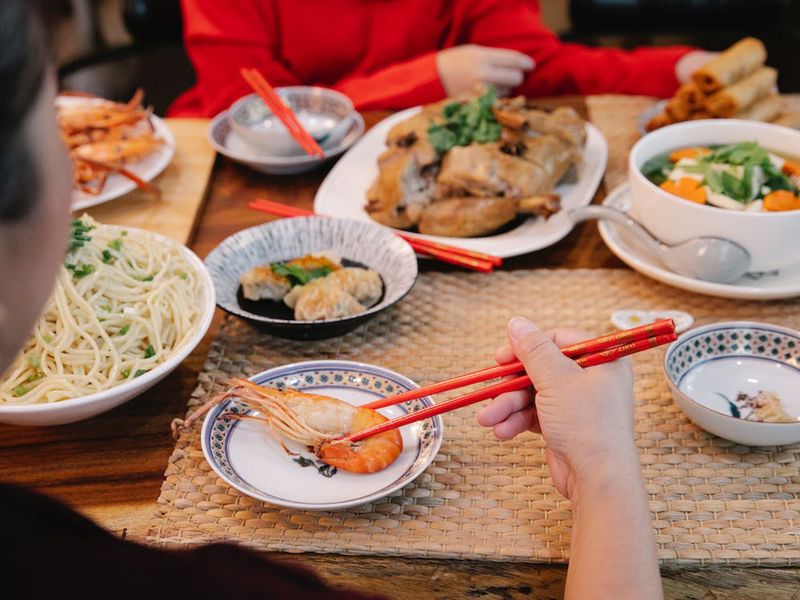
Why stop using forks and knives?
Nowadays, forks and knives are used mostly in Western restaurants in China. Chopsticks have wielded their way to becoming the winning tableware on a Chinese dining table.
According to what Chinese American author Qingjia Wang wrote in his book ‘Chopsticks: A Cultural and Culinary History’, the shift from forks and knives to chopsticks were gradual – chopsticks proved to be more practical as Chinese cooking techniques advanced and diversified.
During the Han Dynasty (from 206 BC to 220 AD), more than a dozen ways of cooking matured, including roasting, grilling, broiling, simmering, steaming, boiling, frying, stewing, and mixing. Most of these cooking methods used chopsticks in the technique, thereby promoting their usage..
Fast forward to the Tang Dynasty (from 618 to 907 AD), cooking tools were invented one after another and ingredients were widely experimented. Stir fry in woks became trendy, and ingredients were chopped into various shapes – blocks, strips, filaments and thin slices. Chopsticks proved to be more efficient in stirring, lifting and checking food in a wok, as well as picking up fine pieces in a dish.
Apart from the practicality aspect, the diffusion of chopsticks had something to do with Confucianism, too.
Article ‘Confucian/Chopsticks Marketing’, published in the Journal of Business Ethics, reported that Confucius himself allegedly referred to chopsticks as being for scholars, and knives for warriors. Several scholars said that under the influence of Confucianism, which promotes benevolence, using forks and knives on a dining table was faux pas, as they represent violence. As a result, they slowly resigned from the frontline of dining and stayed in the kitchen for meal preparation.
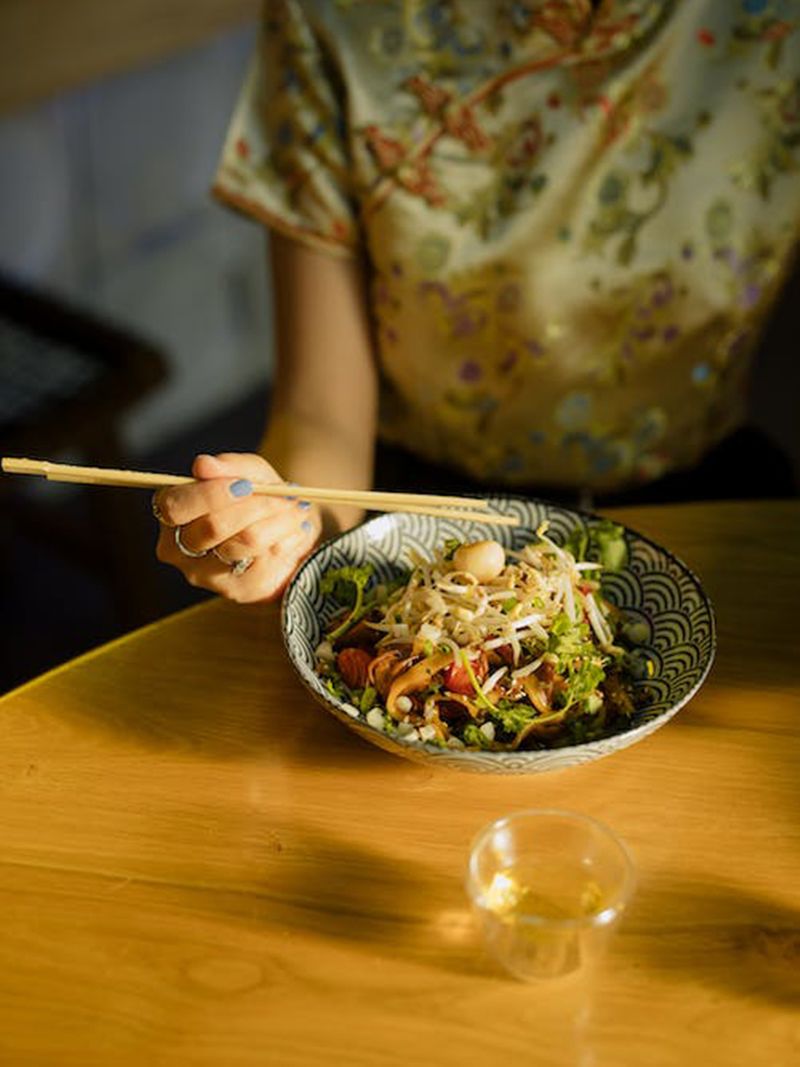
Different types of modern-day chopsticks in East Asia
According to Lisa Bramen in her 2009 article for the Smithsonian Museum in New York, ‘The History of Chopsticks’, by 500 AD, the culture of using chopsticks had spread to Japan, Vietnam and Korea from China. Over time, chopsticks integrated into their local societies and developed different characteristics.
Chinese ‘kuai zi’
Named ‘kuai zi’, Chinese chopsticks tend to be long and thick in style. This is largely due to dietary habits in China. For example, China has a food sharing culture – they usually gather together for meals, and the dishes are placed in the middle of the table, so longer chopsticks are needed to pick up food that is far away from them, as per article ‘Chopsticks are different in China, Japan, and Korea’ published on the information site sohu.com.
It also states that the shape of Chinese chopsticks is typically square at the top, while round at the eating end, which illustrates an old saying, "The sky is round and the earth is square".
In ancient China, the chopsticks used by ordinary people were generally made of wood or bamboo, while for the rich and entitled, they were made of silver, gold, jade, bone, ivory, agate, coral and some other expensive and exotic materials. Nowadays, average households still use wood or bamboo chopsticks. However, chopsticks made of metal, alloy and melamine are added to the list in restaurants, for reasons such as durability, price and ease to clean.
Japanese ‘hashi’
Chopsticks used for eating are called ‘hashi’ in Japanese. According to Chinese American author Qingjia Wang, most chopsticks used in Japan are shorter than their counterparts elsewhere. This may be linked to the country’s dietary habit of serving cooked dishes in individual plates or bowls, making a longer length unnecessary.
The eating end of Japanese chopsticks also tend to be narrow and pointed – as fish takes up a big part in its cuisine, pointy chopsticks can help eaters navigate and pick out fish bones easily.
“Particularly, the utensils for children tend to be shorter and smaller, since children’s hands are generally smaller,” says Shunto Suzuki, a Japanese expatriate living in Dubai and working as a Japanese language teacher.
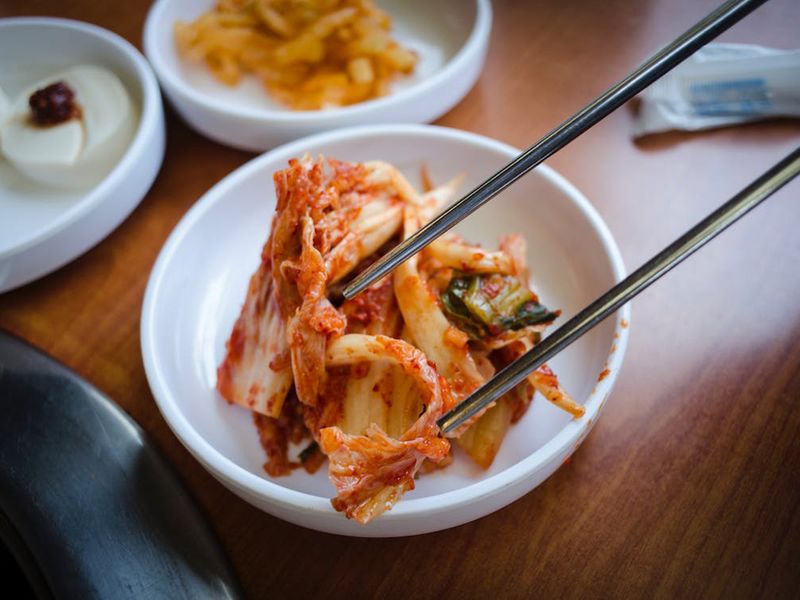
Korean ‘jeotgarak’
In Korea, chopsticks are called ‘jeotgarak’. They come in a variety of metals or stainless steel, as per food blogger Chihon Kim in his 2023 article, ‘Korean Kitchen: Why Koreans use metal chopsticks’. Due to the slippery nature of these materials, chopsticks in Korea tend to be flat, rectangular and rough at the eating ends.
He also noted that the chopstick set is often paired with a spoon in Korea – spoon is used for rice and soup dishes, and chopsticks are used for sides and noodles.
“Very rarely you will see chopsticks alone in a meal setting in Korea, even when you are having noodles,” says Misoo Kim, a Korean English translator and executive assistant based in Dubai.
“Nowadays, Korea has chopsticks made of different material such as wood, metal and stainless steel. However, traditionally, Korean chopsticks were made of metal – there are many reasons for it, some of which are a metal’s durability and ease of cleaning.”
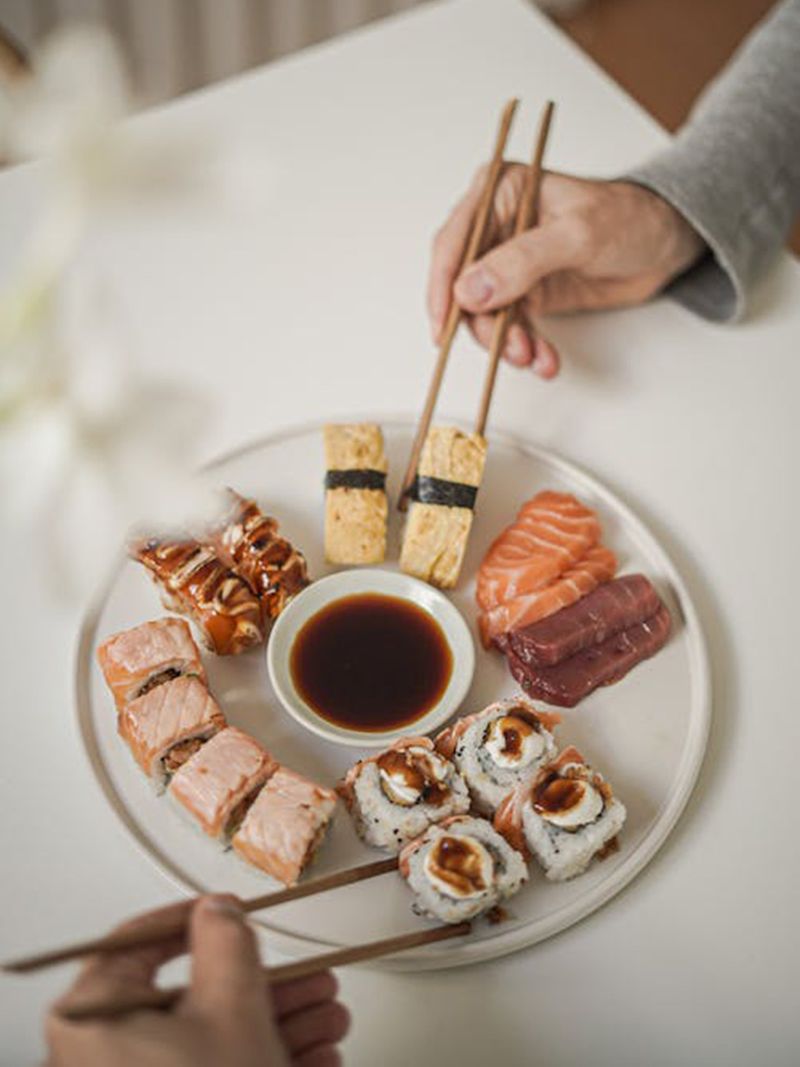
Chopstick etiquette
There are some common chopstick etiquette rules across different cultures. In general, sticking chopsticks vertically into a bowl of rice is used in funeral rituals in many cultures, so the gesture symbolises feeding the dead, which is a big no-go in countries like China, Japan and Korea.
In China, traditionally, it’s acceptable to transfer food using one’s own chopsticks to closely-related people. It’s considered poor manners to tap chopsticks on the edge of one’s bowl – in the past, beggars used to make this sort of noise to attract attention. It’s also impolite behavior, especially when done before the meal is served, towards people who are cooking, as it implies your impatience and that the chef has kept you waiting.
Digging in and searching for food in a dish is considered rude in China. It indicates that you are not concerned about what other people sitting at the table think or need.
It’s considered poor manners to play with chopsticks, move them around in the air too much or use them to point at people.

In a group meal setting, the younger generation should wait for the older generation to pick up their food first. This shows respect to the senior.
In Korea, “Pointing to people using chopsticks is considered bad manners. While I’m uncertain what the exact reason is, but chopsticks are regarded as important tools for food. Misusing it in this way may be viewed as uneducated,” Misoo Kim said.
“In a group meal setting, the younger generation should wait for the older generation to pick up their food first. This shows respect to the senior.
“Passing food to close friends and family members are okay – sharing food is a big part of Korean food culture. However, if you are with a group of strangers, passing food to others using your chopsticks is impolite, for reasons such as you might drop food on the table, or drop sauce on other eaters.”
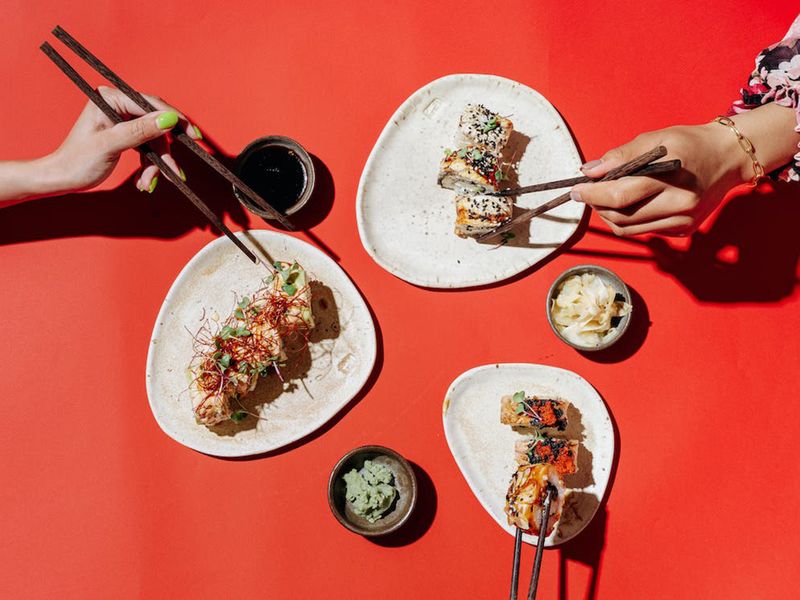
In Japan, the eating end of the chopsticks should be placed on a chopstick rest when chopsticks are not used. When you are using disposable chopsticks, where the rest is not available, chopstick wrappers maybe folded into a rest, according to the book, ‘Japanese Etiquette Today: A guide to business and social customs’, written by James M. Vardaman and Michiko Sasaki Vardaman.
However, Shunto Suzuki said that this good manner is not followed by everyone in Japan.
“Not everyone would follow this good tradition, but yes, it is a part of our chopsticks etiquette. In formal use, disposable chopsticks should be re-placed into the wrapper at the end of a meal.
“Reversing chopsticks to use is generally frowned upon. However, it’s okay to do so when moving food from a communal plate, if there are no communal chopsticks available.

Passing food to close friends and families using chopsticks is okay. However, the food should be passed from chopsticks to that person’s plate, not from chopsticks to chopsticks,
“Passing food to close friends and families using chopsticks is okay. However, the food should be passed from chopsticks to that person’s plate, not from chopsticks to chopsticks,” says Suzuki.
Sharjah-based Japanese teacher Moe Hirose explained further, “Passing food from chopsticks to chopsticks is used primarily in a funeral ceremony, where bone fragments are passed to another while placing the remains of the deceased. Chopsticks used in this scenario is specialised – it’s longer and thicker than table chopsticks.”
She also said that, when not in use, chopsticks should be placed in the right-left direction, between you and the plate, with the eating end to the left.
As per tastingtable.com that writes about Japanese chopsticks etiquette, writes: “To many, taking disposable chopsticks, breaking them apart and rubbing them together may be an instinctive thing to do, particularly if you are worried about ending up with a mouthful of splinters. And while this isn't a problem if you are dining at a Chinese restaurant, the same cannot be said if you are at a Japanese restaurant — or if you are dining with a Japanese host — where the act is seen as an insult. The view is that splinters are only a problem if the restaurant's operators are cheap, and they have no desire to be viewed as being that. There is even a name for this particular breach of etiquette: kosuribashi.”
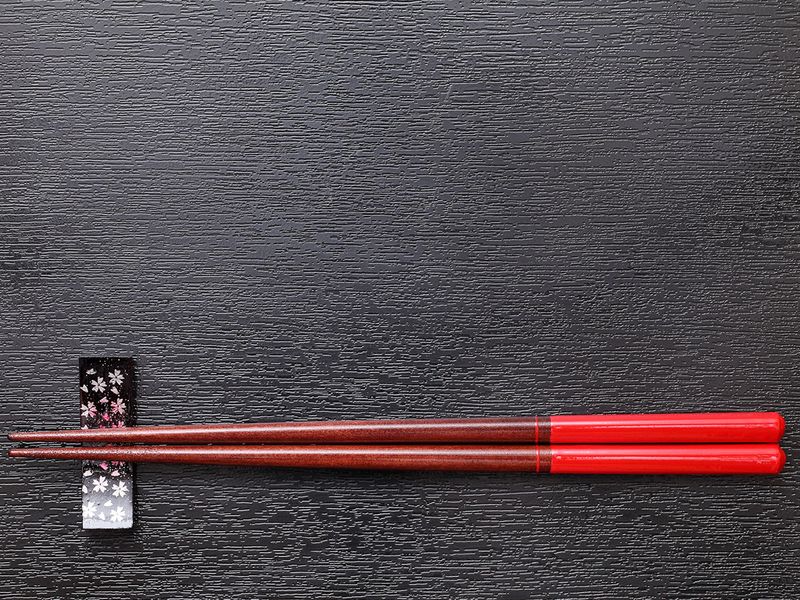
Chopsticks as gifts
Chopsticks are sometimes given as gifts to others in China. Next time when you are scratching your head for gift ideas, you may consider them as an alternative.
Chopsticks are in pairs, implying ‘together’, as a result, they are given to couples, business partners, or pairs who need to work together to achieve a common goal in China, for the meaning of ‘togetherness’.
Their name in Chinese, “Kuai zi”, sounds like a shortened version of ‘kuai sheng gui zi’, which means ‘soon to have children’, so they are also given to newly married couples in China for this particular reason.




